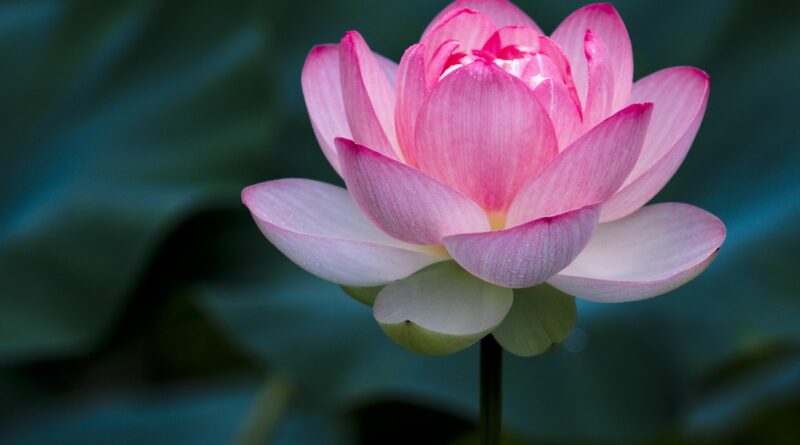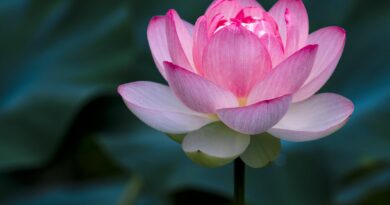Be Precise
Be Precise
March 9, 2019
We’re here to observe our minds. But we start by observing the breath, because the breath is like an object we’re working on, and you see the results of your actions in the object. That way you get more sensitive to what you’re doing.
Say, for instance, you see a basket. Looks pretty easy; shouldn’t be any problem making one. So you make one. Then you look at your basket and compare it with the original basket. You see that they’re two very different things. Some people give up at that point. Other people say, “Well, there must be something I’m doing wrong.” So they go back and make another basket, look at what they’re doing, and then look at the resulting basket. What in that basket still needs to be improved?
The raw materials are not all that different. What you’ve done with them is what makes all the difference. And you see your actions in the final product. When you see they’re not giving good results, you have to go back and change what you do, make a new basket in a better way, and then a better way. That’s how you get more sensitive to what you’re doing.
That’s the whole purpose of the concentration: to get more sensitive to what the mind is doing. This, of course, relates to the heart of the teaching: the four noble truths. We’re doing something in the mind that’s giving rise to suffering, and we’re suffering because of our ignorance of what we’re doing. We also have the potential to do something that puts an end to suffering. To see the difference, you have to focus on what you’re doing. You have to learn how to see your actions in the results, see the connection between cause and effect, and see the difference between different causes and different effects. That requires some very sharp and consistent powers of observation, which is another reason why we want to observe the mind in concentration. The concentration allows us to see subtle things we couldn’t see otherwise.
So, you focus on the breath. You begin to realize that the way you focus on the breath, the image you hold in mind of the breath, and the perception of the breath are all going to have an effect on how the breath feels—whether it’s going to be a good place to stay or not a good place to stay. But those are things you can change. If they’re not good, try something else. If that’s not good, try something else again. When it is good, learn how to stay with it. Observe what you’ve got.
It’s all too tempting when you read about the different levels of jhana to want to race right through them. But you don’t see anything by racing through them. We’re not here to cut little notches in our jhana belts. We’re here to observe the mind. And one good way of observing the mind is to get it in a good state of concentration. The next step is to keep it there until you really get to know it. Try to see what problems you have in keeping it there.
One very common problem is that you slip off the breath and go into the sense of ease, and things get murky, blurry. It’s like going into a dream world, what Ajaan Lee calls “delusion concentration,” where things are very still, but you’re not very clear about where you are. That kind of concentration won’t give any insight into your actions.
You have to realize there’s a distinction between the breath and the pleasure. They’re going to both be there in almost the same place, but they are different things. The pleasure is the result. The shape of the breath, the way you’re breathing, comes from your actions and intentions. So, maintain the intention to stay with the breath and learn to see that even though these things come together, they are different.
When you learn how to be precise in your observation, the mind gets into stronger concentration and allows you to see things even more precisely. You begin to see that your inner discussion about staying with the breath, adjusting the breath, becomes a disturbance. And when you really, clearly see that it is a disturbance, that’s when you let it go. Don’t let it go beforehand. In other words, it’s not simply because you’re told that if you want to get farther along in the concentration, that’s what you’ve got to do. You’ve got to really see for yourself that you’re doing something disturbing and unnecessary at the same time.
This is one of the reasons why when Ajaan Fuang was teaching meditation, one, he wouldn’t talk about jhana at all. And two, if anyone asked him about what was the next step or the next step after that, he’d say, “Don’t worry about that yet. Worry about where you are right now. If it’s something good, keep it up. And whether it’s jhana or not jhana, as long as it feels good, stick with it.” When you see something disturbing, drop that and see if you can still stay in the concentration. Now, sometimes, something seems like a disturbance but if you drop it you’ve lost your concentration, which is a sign you’re not ready to drop it yet. Go back and pick it up again.
In other words, don’t let your concentration be overly ruled by the texts or by what you’ve heard about concentration. Focus directly on what you’re doing right now, to see what’s a cause and what’s a result. When they separate out clearly, you can move on. Drop anything that’s getting in the way of allowing the mind to settle down more fully and really be at its ease. But hold on to whatever you need.
Ajaan Suwat gave a Dhamma talk on how you should regard anything that comes to disturb your concentration as stress, as suffering, even though it may not seem all that onerous or heavy. That’s how the perfection of concentration leads to discernment, moving it into the four noble truths. But you don’t have to think in terms of the four noble truths. Just think, “What is this disturbance right here? And how can I stop it?” Try to be very precise in how you observe these things.
We had a question this afternoon about what a big problem the ego is. Well, “ego” means a lot of things, and it involves a lot of different actions, some of which are actually skillful and some of which are not. It’s too big a concept to function in the analysis that’ll succeed in getting rid of a problem. You have to see the problem in action and divide it up into useful units.
In other words, you have to see what you’re doing in action because the problem lies in your actions. There may be ignorance there. There may be craving there. You need to be very precise in seeing the steps in how these things arise, how they pass away, because only when you see the steps can you begin to see, “Oh. This is the allure. This is why I go for them.” And it may be—probably will be—something you hadn’t expected at all. There may be something hiding behind what you thought was a perfectly fine idea, a perfectly justified idea. You have to dig down to find the real reason, and when you find it, you’ll ask yourself, “Well, why go for that?” It’ll obviously be not worth going for.
This is one of the reasons why, when we’re getting the mind concentrated, everything that gets in the way—no matter how right or how good your ideas may seem—has to be regarded as a disturbance, a distraction. Develop a certain amount of skepticism toward your ideas, so that when the mind feels tempted to go for them, you can begin to ask, “Well, why?” You learn not to trust the voice that says, “Well, of course this is good. This is right,” because maybe there’s something else going on as well.
The more precise you are in seeing things, the more clearly you see where the allure is. Then you can compare it with the drawbacks. When you can see these things clearly, that’s when it begins to hit home: Yes, this really is something you do want to get past, something you do want to escape from.
Even though there is a general tendency to reduce the Buddha’s teachings to a few slogans or a few general concepts, still, as practitioners we have to resist that tendency. We’re looking for the particulars. Why this disturbance? Why this distraction? Why do you go for it? How did it start? Where does it start? Does it really last, or does it come and go? When it goes, why does it go? What’s the difference between the mind state when it picks it up and the mind state when it drops it? What happened to the allure? Sometimes the allure comes when you pick it up, but then it fades very quickly. You drop it. But then you forget and you pick it up again. Why did it fade?
You want to slice things very finely this way. And your ability to slice things finely has to come from your practice of concentration when you can see things distinctly like: “This is the breath, and this is the ease that comes from the breath. They’re two separate things even though they’re right there together.”
A lot of discernment has to be developed in the course of getting the mind into concentration and maintaining the concentration—particularly, insight into what you’re doing. The breath becomes the object you shape with your actions. You look at the shape of the breath and you learn a lot about your actions. You can start discerning where your lack of skill is.
And you can do something about it, which is much better than dealing in abstractions or imposing ideas you picked up from books—even from the teachings of the ajaans. Their words may be right, but sometimes the way you understand them is not quite right. How do you make it right? By looking carefully at what you’re doing.
Be precise in your observation of what you’re doing. Be precise in the observation of the object you’ve made here with the breath, the concentration you’ve made by staying with the breath. That’s how you begin to arrive at some insights that really do make a difference in the mind. They show you something that’s been here all along, but you haven’t seen it because you haven’t been looking in the right place, or haven’t been looking precisely enough, or haven’t been asking the right questions. But it’s here to be seen.
The more precise you are in chasing away distractions, the quicker you are to chase away distractions, the more precise you are in how you focus on things and the perceptions you use, then the more the practice of concentration really will be good for the mind. It’ll show you areas where you’ve been foolish, areas where you’ve been blind—things we normally don’t like to see, but things we have to learn how to see if we want to stop suffering.



